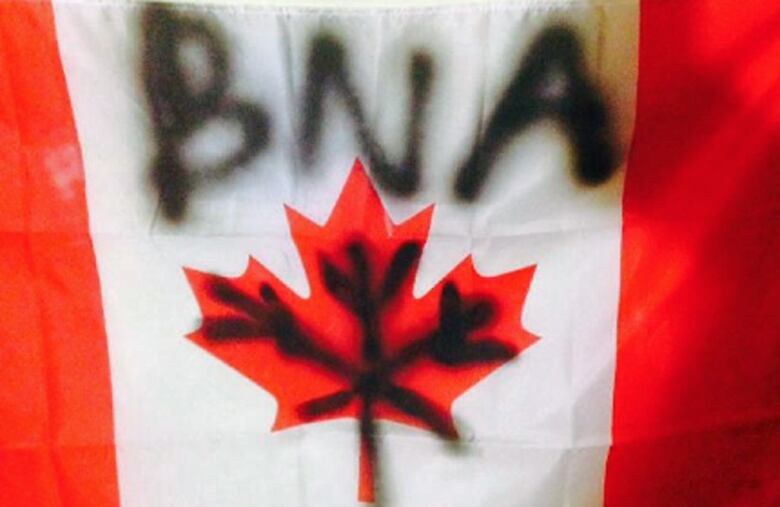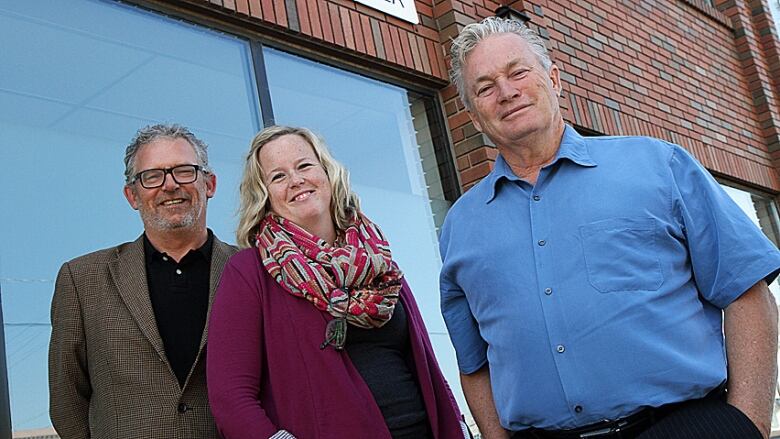Hamilton teen gangs: 'Little men playing big men games'
Jesse Clarke, 14, was killed in east Hamilton back in August
YoungHamilton teens are emulating violent gang activity as a way to connect with each other and protect themselves in rough areas of the city andin at least one case, it has lead to a tragic death.
That wanna-be youth violence is on the radar of social agencies, the school board and police, all of whomhave dedicated resources to working with kids and trying to makethemunderstand the dangers of gang-related activity and the significant consequences of the path they're on.
As one woman on social media puts it, these are "little men playing big men games."
At 14 or 15 years old, it starts as relatively innocuous mostly fights and some minor drug dealing, while gaining status and respect fromposting about their supposed gang ties on social media. These teens can also be used by "real" gangs for some low level jobs, which draws them further into gang culture.
But those "games" have serious implications and theactivities and posturing can have largerconsequences both in terms of violence and the courts.
Those individuals arent affiliated or arent members, said DavidStam, the program manager for the YARD program, the John Howard Societys organization that focuses on gang violence prevention.But they are all at-risk young people who are engaging in behaviour that creates risk in terms of engaging in criminal behaviour, and that may lead to violence.
Last month's killing of 14-year-old JesseClarke appears to be an extreme example. The teenwas stabbed to death in an incident that arose from a group of teens that youth advocates say are emulating Hamilton's actualyouth gangs.
- READ MORE: Jesse Clarke's death caused by armed conflict: accused's foster mom
- READ MORE: Friends mourn Jesse Clarke, 14, killed in East Hamilton stabbing
Witnesses in the east end neighbourhood where Clarke was killed last month reported seeing about a dozen young men show up at a home brandishing pipes and bats just before he was stabbed. Posts all over social media after his death carried the name of two youth gangs: BNA (or Black Native Association) and LOM (Loyalty Over Money). The teens friends and kids who live in the area mentioned them too.
Police and youth organizations say the violent act that lead to the 14-year-old getting stabbed and dying in the street had no firm connection to gang violence in theformal definition of gang violence that police or the courts use. That definition includes a hierarchy and structure that commits crimes in an organized way.
Yes, both BNA and LOM are realyouth gangs active in the city, Stam says.
Hamilton as an overall community has always had a problem with at risk young people.- David Stam, program manager for the YARD program
According to friends, Clarke was affiliated with BNA but Stam says its much more likely that Clarke was just part of an at risk group who use a perceived social connection to those groups as a way to find security and leverage on the street.
Some of the youth gangs like LOM or BNA will use younger people in a social settings so that they can actually benefit as well, Stam said. Theyll use them for crime and gang related activity. Some of Clarkes friends say the group is involved in minor drug dealing, but largely, they were just involved in fights and acts of violence. Most of the people involved are in their early teens.
Youth violence down, police reports say
While Clarkes death shines a light on the seriousness of youth violence legitimately gang related or not youth crime rates and violence in the city is actually dropping. According to Hamilton polices latest year-end report on youth crime, youth violence reports were down 14.3 per cent last year compared to 2012. The percentage of young people "involved" with drug offences however, was up six per cent from the year before.
We dont have near the number of kids in our facilities anymore, said Joyce Luyckx, the CEO of Banyan Community Services, an association that provides support services for young people in the criminal justice system. What is more prevalent, she says, is kids sharing gang related posts and photos on social media. That can lead to more exposure, and the perception that gang activity is growing.

Young people do use social media to give off a front as if theyre connected to gang activity, says David Lane, the Executive Direction of the Hamilton/Burlington John Howard Society. They do a lot of that stuff, but whether theyre in actual core youth gangs many of them arent.
While the "real" gangs get the attention of the guns and gangs squad, social agencies and police school officers are the ones trying to get to the younger teens before they cross that threshold.
One of the biggest problems is young people just lack the foresight and experience to understand the gravity of some of their choices whether its as seemingly innocuous as running a package across the city or as dangerous as carrying a weapon and trying to collect a drug debt. Our young people just lack that big picture thinking. Theyre totally living in the moment, said Const. Jonathan Van Owne, a school and youth officer with Hamilton police.
They simply dont have that brain capacity at the moment. Sometimes I feel like Im giving really logical explanations, but it just doesnt follow through.
Breaking down barriers
There are lots of reasons that young people make those choices, though. Often, theyre pushed by situations outside their control and face many barriers either at home, at school or in the workplace.
These young people have faced in their lives a lot of trauma, a lot of rejection, a lot of failure. All of that social and emotional kinds of trauma is part of who they are, Stam said. Hamilton as an overall community has always had a problem with at risk young people who are engaged in minor criminal offences, increasing to assaults and more violent offences.

More than anything, kids just want a place where they can feel a sense of community and connectedness, he says. In many cases, kids who engage in pre-gang or violent activity are totally disengaged from their parents, their school, and from recreation or community contacts. When they have nowhere else to go, they turn to gang subculture for a sense of belonging, safety, and popularity.
So the answer here is not just about focusing on what gangs are in Hamilton and how we disorganize them, Stam said.
Its more about looking at how we develop strength in the individuals who are at risk as well as strength in communities.
Working in schools and the community
So what is being done to keep kids away from violent, gang inspired behaviour? Police admit that youth gang activity is in our schools.The school board is pushing programs that stress academic achievement and success as a way to foster a sense of belonging, says David Hoy, the manager of social work services with the Hamilton-Wentworth District School Board.
"If youth are involved in those activities, then the likelihood of them being gang-involved decreases," he said. But there's no denying gang affiliation is there in Hamilton schools, he says. "We might think it's not there, but it's in every school. It can be the 'hangers-on, but it's there."
Hoy also says giving students a voice and then showing them how that voice can make change is important. They might think the world is unjust and there's no way to change that but Hamilton's school system is doing what it can to change that, he says. "The youth voice can be incredibly powerful for evoking change."
The John Howard Society's YARD program has beenrunning for just about a year now, and in that time, it hasworked with about 80 at-risk young people and their families. YARD uses different methods, whichrun from the wide reaching like establishing a gang-reduction strategy for the city to the small scale, like prevention and intervention on a case by case basis.
In some ways, what at-risk teens need is deceptively simple: it can be as easy as someone riding the bus with them to get an ID or fill out some paperwork. While that might seem mundane and easy to us, these kids often just weren't raised in a way that social systems were explained to them, says Kelly Burke, a youth worker with YARD.
They dont know what the building looks like, or what it looks like inside, or whats going to be asked of them, Burke said. "They just don't."
Its having someone there who might not even say anything during the process, they know they have that person to attach to and make that transition easier.












_(720p).jpg)


 OFFICIAL HD MUSIC VIDEO.jpg)
.jpg)



























































































